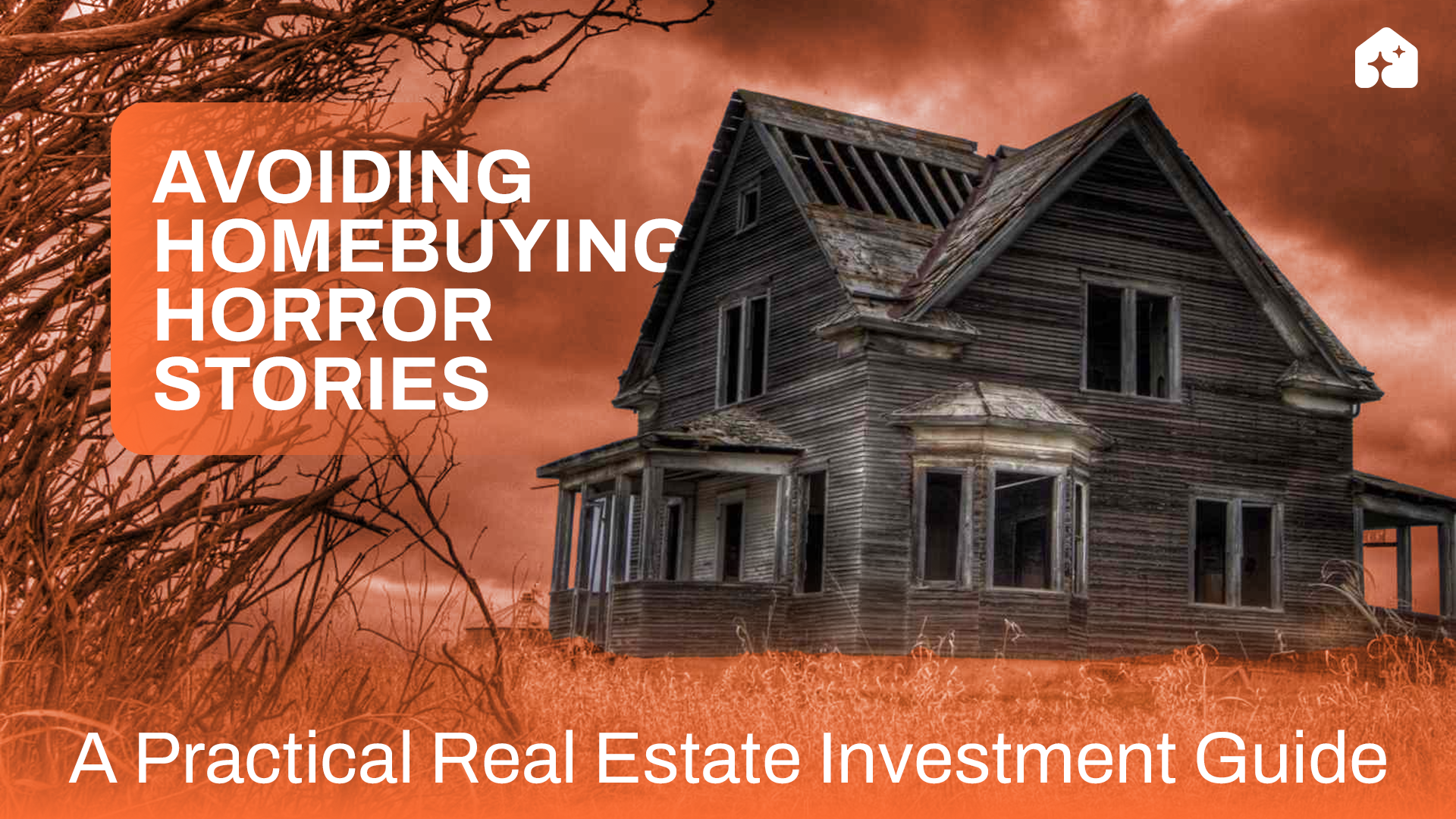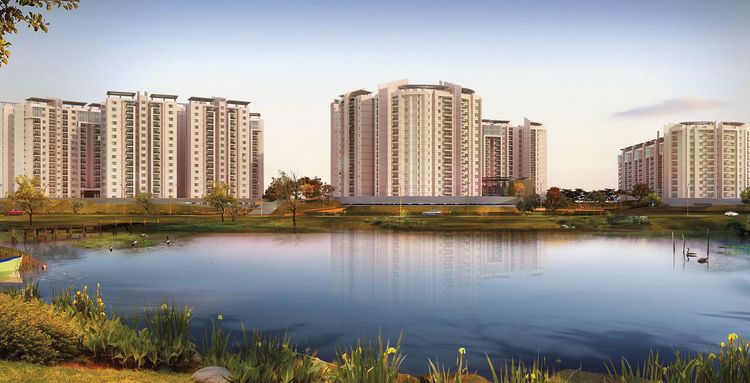Buying a home can either build your wealth or turn into a long, draining regret. And honestly, it’s not about luck, it comes down to how structured and informed your process is.
Too often, buyers get carried away by glossy brochures, half-baked comparisons, hidden costs or just doing things in the wrong order. And the result? Major issues show up after they've committed.
In this blog, we’re breaking down the most common homebuying and investment mistakes, the kind that lead to real horror stories and sharing a clear, step-by-step playbook to avoid them. Every point here comes straight from what we’ve seen play out in the real market.
Why Does Real Estate Become a “Horror Story”?
For homebuyers, real estate mistakes don’t come from one big bad decision, they come from a series of small things they weren’t told or didn’t know to ask. Here's where it usually starts to go wrong.
- Master Plan and Hidden Environmental Traps
The layout looks perfect, towers seem well spaced and everything feels open and breezy. But once the project is built, many buyers realise their home barely gets sunlight or proper ventilation. The buildings end up too close to each other and what looks great on paper turns into a daily frustration that also hits your property’s value or rental demand.
Then there is the environmental cause. That peaceful stream in the brochure turns out to be a flood-prone rajkalwe. The so-called premium units might be right next to a sewage treatment plant or waste converter, bringing in smells, noise and health concerns that no one told you about upfront.
- Sample Flat
Sample flats are built to impress but not always to reflect reality. Developers often make them look bigger by increasing the ceiling height, using smaller furniture and staging everything perfectly.
When buyers move into the actual flat, it feels completely different. Rooms feel smaller, furniture doesn’t fit the way it did and people are left wondering why their 1800 sq ft home feels so tight.
- Pricing & Hidden Charges
The price you see is almost never the price you end up paying. What starts as a simple base price quickly adds up. There are extra charges for higher floors, better views, clubhouse access and vague “infrastructure” costs. Then come the government-related charges like GST, stamp duty and local utility fees.
By the time everything is added, the total cost often jumps by 10 to 20 percent. Some of these add-ons are even tucked into confusing categories to make the starting price look more attractive than it really is.
- Information Asymmetry & Trust Gap
Most buyers are already stretched thin, juggling work, family and everything in between. It’s hard to make time to visit enough projects, compare them properly, understand the actual cost structures or even dig into the neighbourhood details.
What makes it harder is that the usual sources people turn to is word of mouth, online reviews or quick chats with sales teams, which often leave out the full picture.
Real risks rarely surface through these channels. And since brokers and sellers are focused on closing the sale, they usually won’t point out things that could be deal-breakers. That leaves buyers in the dark, making one of the biggest decisions of their life with only half the information they actually need.
Key Inputs Every Homebuyer / Investor Must Capture
Before putting in money, smart buyers take a step back and look at the full picture. These are the things that really move the needle when it comes to long-term value and peace of mind:
- Location fundamentals and what’s driving demand
It’s not just about where the project is but what’s coming up around it. Big-ticket infrastructure like new roads, metro lines, flyovers or airports can completely change how well-connected a location is and that directly impacts price appreciation.
- What’s pulling people inApart from infrastructure, some areas naturally attract demand. Lakes, green spaces, large malls or even upcoming lifestyle zones can become magnets. These are what create local buzz and hold value over time.
- Job hubs and commercial activityWhere there are offices, there’s demand for homes. A rough rule of thumb is that every 1 sq ft of commercial space adds demand for 6 to 7 sq ft of residential. That’s why being close to employment hubs matters, whether you're buying for yourself or planning to rent it out later.
- Schools, hospitals and daily-life convenienceAreas with good schools, hospitals, and basic everyday infrastructure are always in demand. These things don’t just improve livability, they also make resale or renting much easier, even if connectivity isn’t perfect yet.
- Land supply and where the market is in its cycleMature areas with very little land left often grow slower. On the other hand, upcoming zones with more land, commercial interest and new infrastructure tend to see better upside, especially if you’re entering early in the cycle.
- Regulatory & Plan Clarity
- Start with understanding the City Development Plan (CDP). This helps you know how the land around the project is zoned, whether it’s marked for residential, commercial, industrial, or agricultural use.
- It also shows planned utilities, high-tension power lines, drainage systems, and eco-sensitive zones. These are things that may not affect the project today but could create problems down the line.
- Also, don’t just rely on the marketing master plan. Take time to look at the sanctioned plan, the one approved by authorities. That’s where you’ll see the full picture, including things you might not be told upfront, like nearby sewage treatment plants, waste converters, or dumping yards.
- Micro / Property-Level Analysis
Once you’ve shortlisted a project, it’s worth taking a closer look at the finer details that often get missed.
- Start with a basic neighborhood scan. A quick look on Google Maps or Earth can reveal a lot about marshy land and graveyards to upcoming high-rises that might block your view or airflow in the future. It helps to zoom out and check the surroundings a few kilometers out.
- Check for light and ventilation. For high-floor or under-construction units, it’s useful to look at where the sunlight comes from and how air flows through the layout. This can help spot poorly designed flats that end up dark or stuffy.
- Consider Vastu as a market preference. Even if you don’t personally follow Vastu, many buyers and tenants do. A flat that goes against basic Vastu principles may face resistance later during resale or renting, especially in markets like Bangalore.
- Choose the right asset type for your goal. Whether it's an apartment, villa, plot or something like fractional ownership, no option is automatically better. It depends on the location, how the pricing compares and how established the builder is. What works well in one area might not in another.
- Timing & Financial Structure
- Project stage
- Buying early in a launch usually means a lower entry price. But if the area is driven more by speculation than actual end-user demand, things can get unpredictable. It’s important to understand the bigger picture before locking in.
- Payment plans
- Schemes like construction-linked plans or “pay small now, more later” sound easy but often carry hidden costs. You might end up paying during construction delays or find out that bigger chunks are loaded toward the end.
- Exit strategy
- Have clarity on how long you plan to hold, what kind of return you expect and when it makes sense to walk away. Some buyers exit just before prices rise, while others hold too long during slow phases.
- Loans and leverage
- Your mix of loan and down payment changes your return. More leverage can boost returns if managed well, but only if your cash flows and timelines are under control. Don’t over-stretch, but don’t underuse financing either.
- Cost Transparency & Benchmarking
- Detailed cost sheet: Decompose the base price, floor/PLC premiums, parking inclusion, clubhouse/amenity charges, arbitrary infrastructure costs, government levies, maintenance terms (duration and responsible party), GST, stamp duty, only then can true ticket size be computed.
- Efficiency-adjusted comparison: Comparing super built-up prices without factoring carpet efficiency or time to possession misleads. For example, a property with higher salable cost but better carpet area and faster possession might be superior in total return and carrying cost.
Decision Framework (Where to Apply Effort)
- Clarify your objective: Living, renting, appreciation, or hybrid. Define horizon, liquidity needs and acceptable trade-offs.
- Initial screening: Filter by legitimacy (regulatory approvals), location fundamentals (infra, magnets, commercial activity) and developer/asset type fit.
- Shortlist + site validation: Visit shortlisted projects with a structured checklist, validate assumptions from research on the basis of density, proximity risks, environmental context.
- Legal/title and agreement review: Ensure clean title, get all verbal promises captured in writing and understand any conditionality in possession.
- Finalize financing & commit: Align the payment plan with liquidity and project progress and lock in the property with the exit roadmap in mind.
- Monitor post-purchase: Track market evolution versus initial thesis and be ready to execute exit triggers if objectives shift.
Simplified Investment Lens
To assess a purchase as an investment, weigh:
- Appreciation potential: Driven by infra, commercial density and supply dynamics in the micro-market.
- Rental yield / liquidity: Tied to location desirability, social infra and structural liveability (light, ventilation, Vastu perception).
- Holding cost: Carrying costs including maintenance, interest servicing, taxes (GST/stamp duty), and opportunity cost of delayed possession.
- Leverage impact: Higher debt can raise equity returns if velocity and cashflow align.
Model scenarios (best/ base/ conservative) around these to avoid being blindsided by downside drift.
Final Words
Real estate doesn’t need to turn into a horror story. With the right inputs, market drivers, plan-level clarity, efficiency-conscious pricing, exit discipline and a transparent validation sequence, you convert ambiguity into a defensible investment decision.
If you’d like help operationalizing this framework (shortlisting, structured validation, and final peace-of-mind checks before commitment), there is a guided implementation path at Propsoch that can walk you through these steps, surface hidden risks, and align incentives so you buy with clarity and confidence.
Talk to the market experts at Propsoch and make your homebuying journey simple, transparent and stress-free.







